Love, Daddy is a true labor of love - it took over a year and a half to collaborate on everything from what the characters should look like to the scenes on each page! See below for a peek behind the scenes at how Love, Daddy came to be!
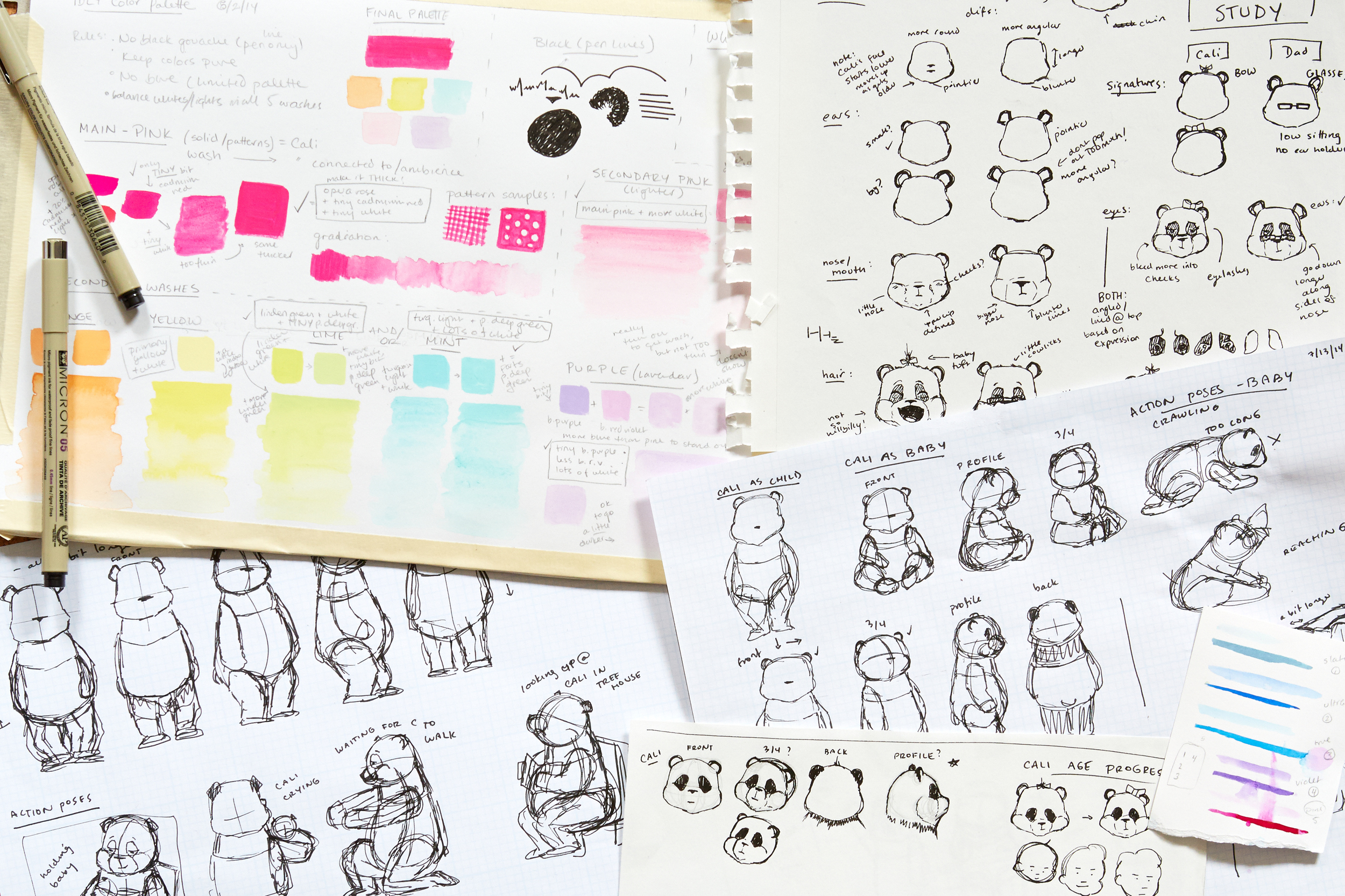
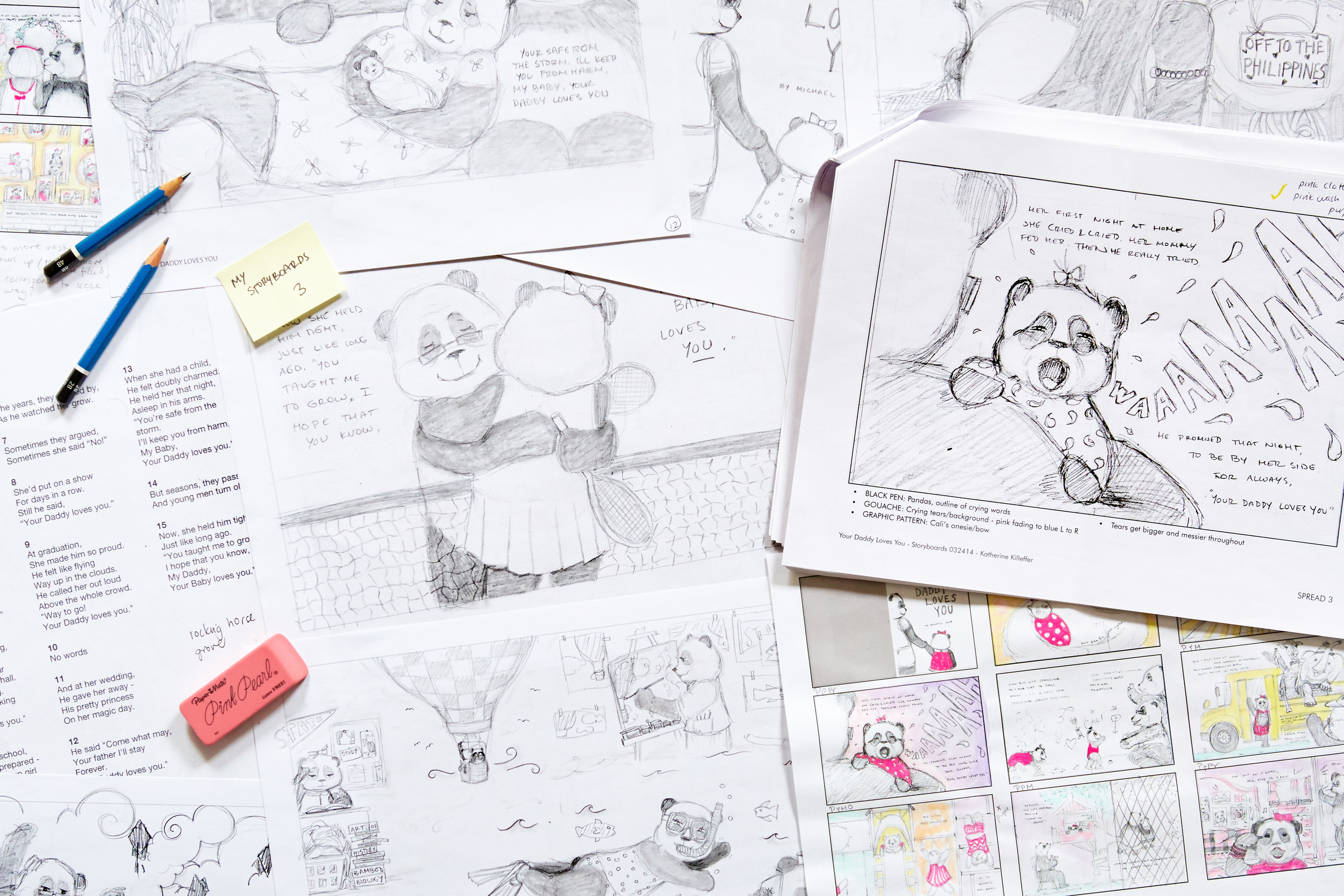
the brainstorm phase
Once Mike had finished writing the manuscript for Love, Daddy, he collaborated with Katherine and Brian to determine what should be happening on each page of the book. After exploring a variety of ideas, we decided to use panda bears as the characters to represent Daddy and daughter. Next we explored a variety of styles for how to draw the panda bears, and the different kinds of medium to use. We tried cut paper collage, sketchy pencil drawings and even origami backgrounds! Ultimately after a lot of trial and error we decided to use pen and ink drawings in black and white with watercolor ink backgrounds. By keeping the line illustrations flat and simple, we could juxtapose the pandas against a variety of colors and textures in the watercolor environments they live in!
“We picked panda bears because they can represent anyone and everyone to help tell our universal story of love, they’re fluffy and cute, and because they are black and white, they make a bold visual impact on the page!”
storyboards and sketches
After the drawing style and medium had been nailed down, Katherine went through the whole manuscript and created a sketch for what each page would look like - this is called a "dummy book" in children's book publishing, and helps everyone visualize what the final product would look like by seeing the pages in order and how the illustrations flow. She also created a character model sheet for reference. Model sheets show the characters in multiple poses and from multiple angles - this way we know what Daddy panda looks like when he's happy, from the back, or even upside down - and the character looks the same from page to page. Mike and Brian provided feedback and suggestions to make the sketches as awesome as possible.
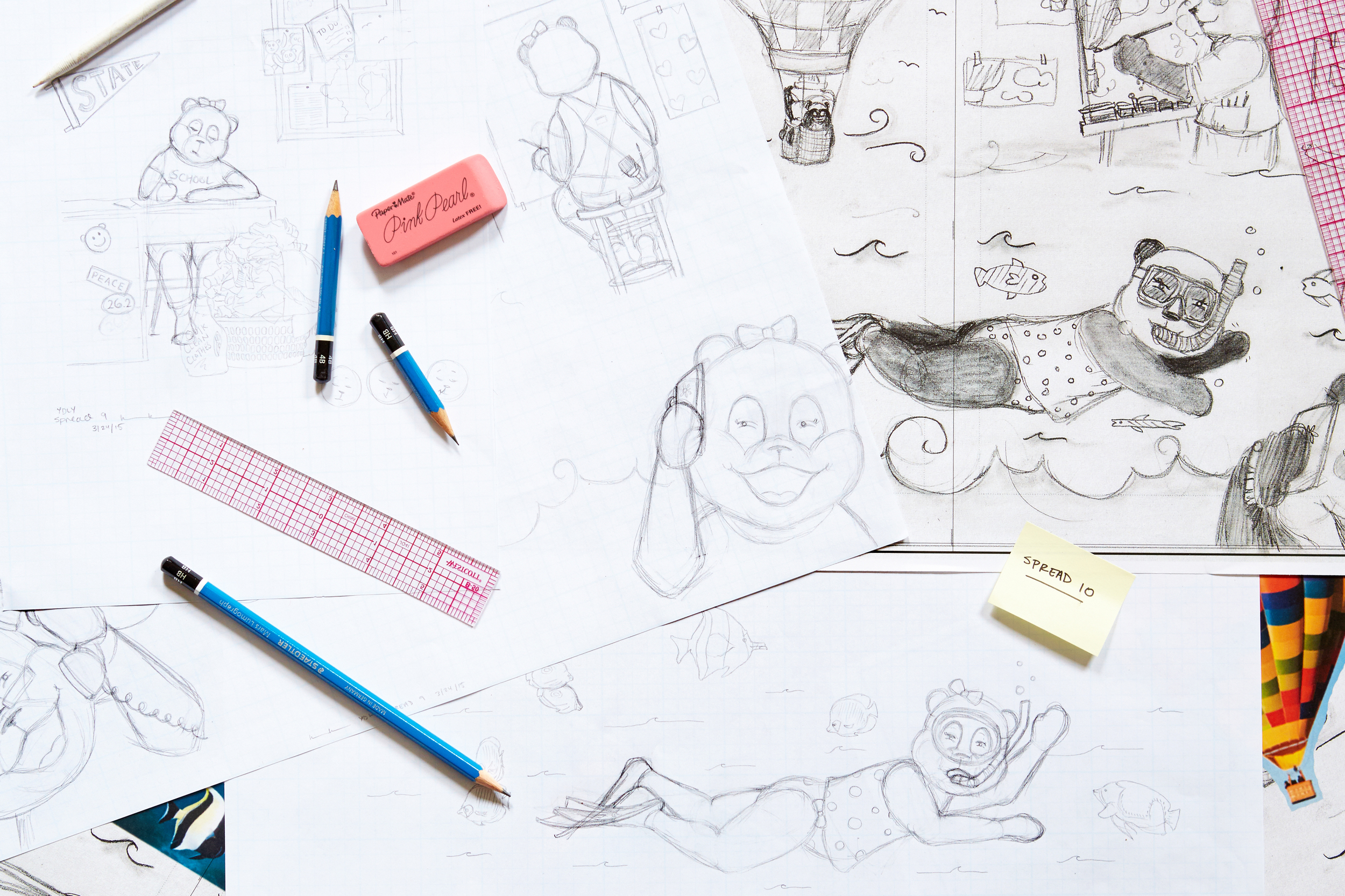
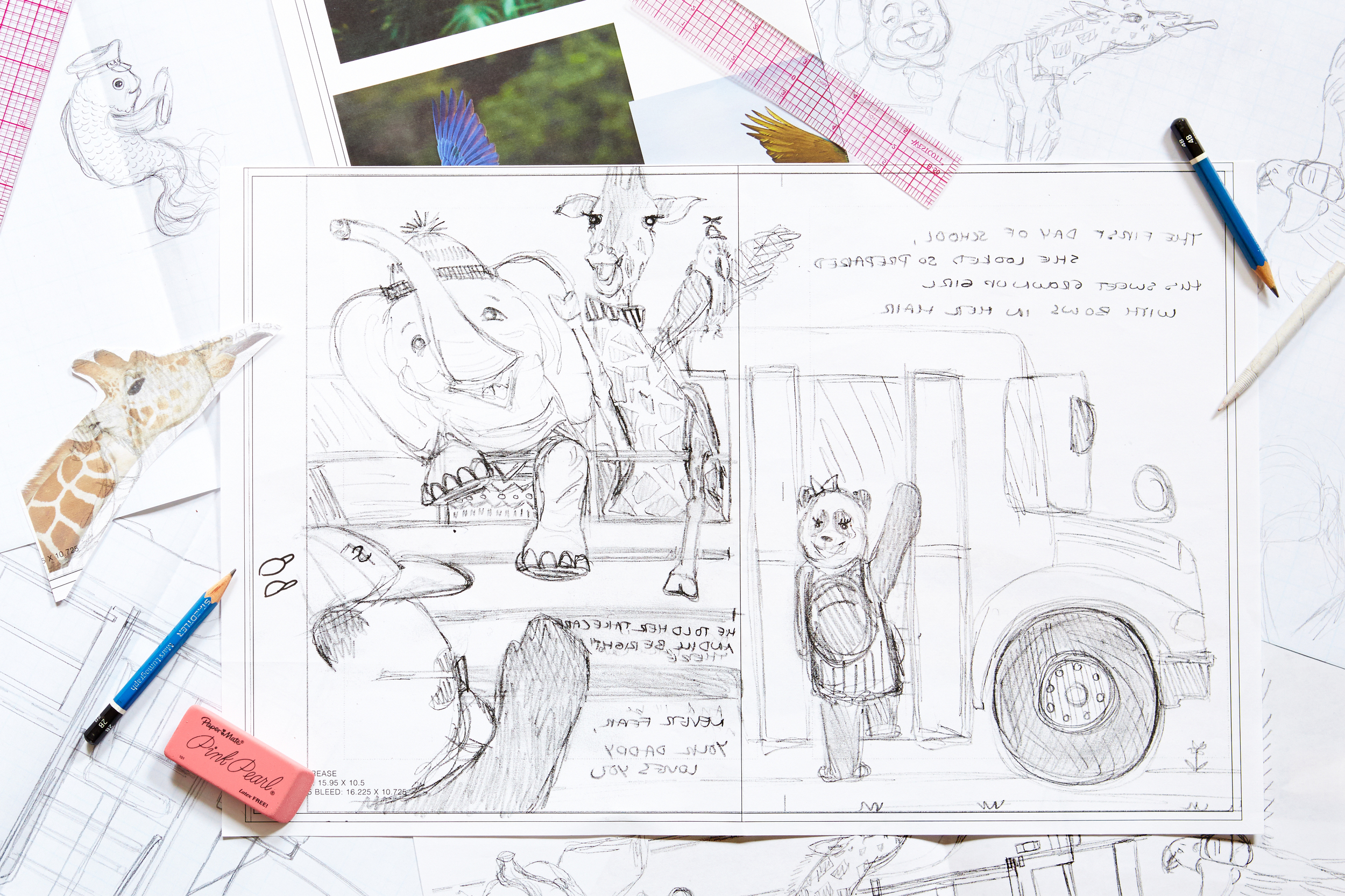
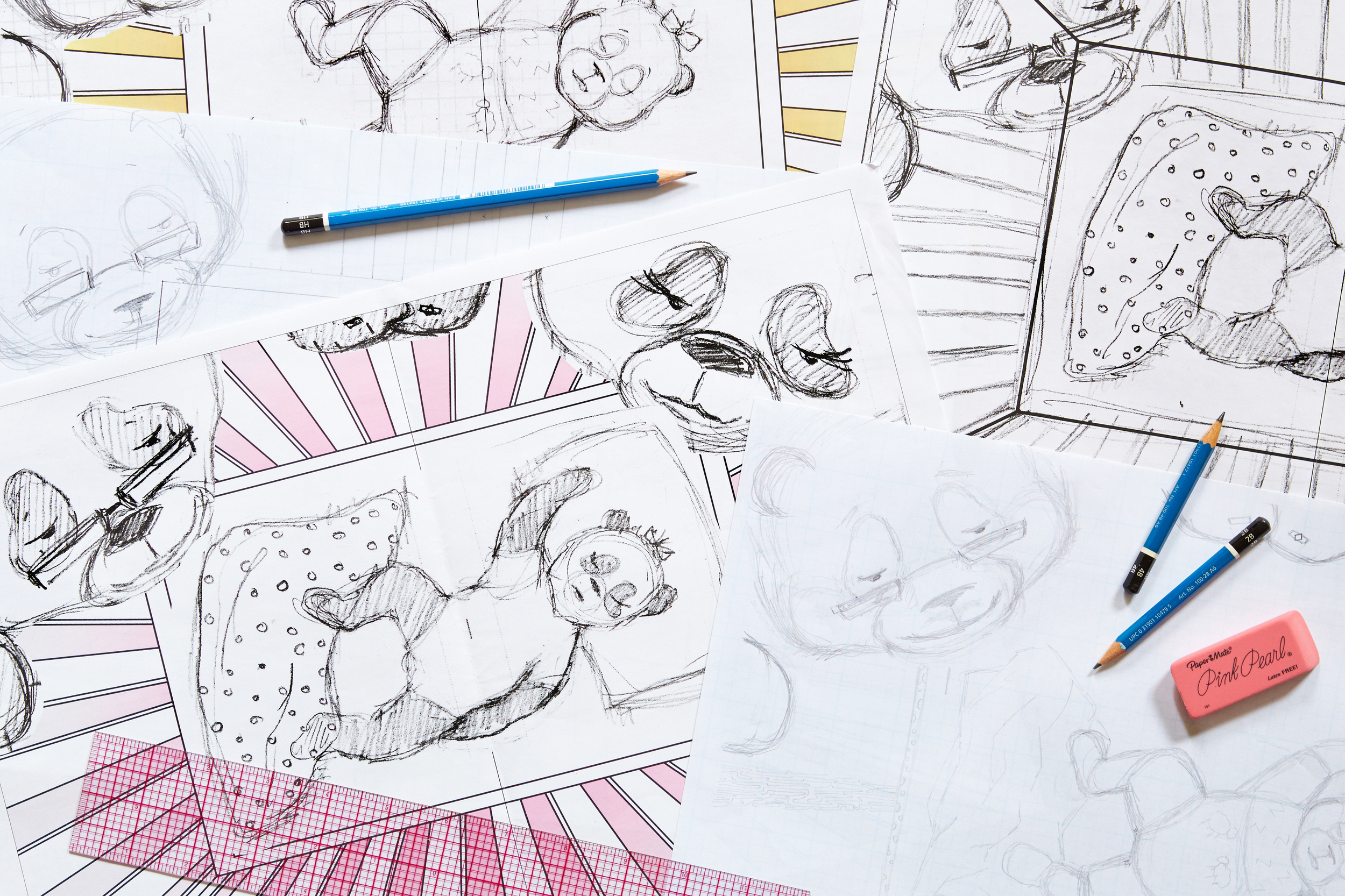
“We were able to include a number of special details from Mike and his daughter’s real life (like her favorite stuffed animal, Mike’s favorite sports teams, and what their backyard looks like) to bring their love to life in a personal way.”
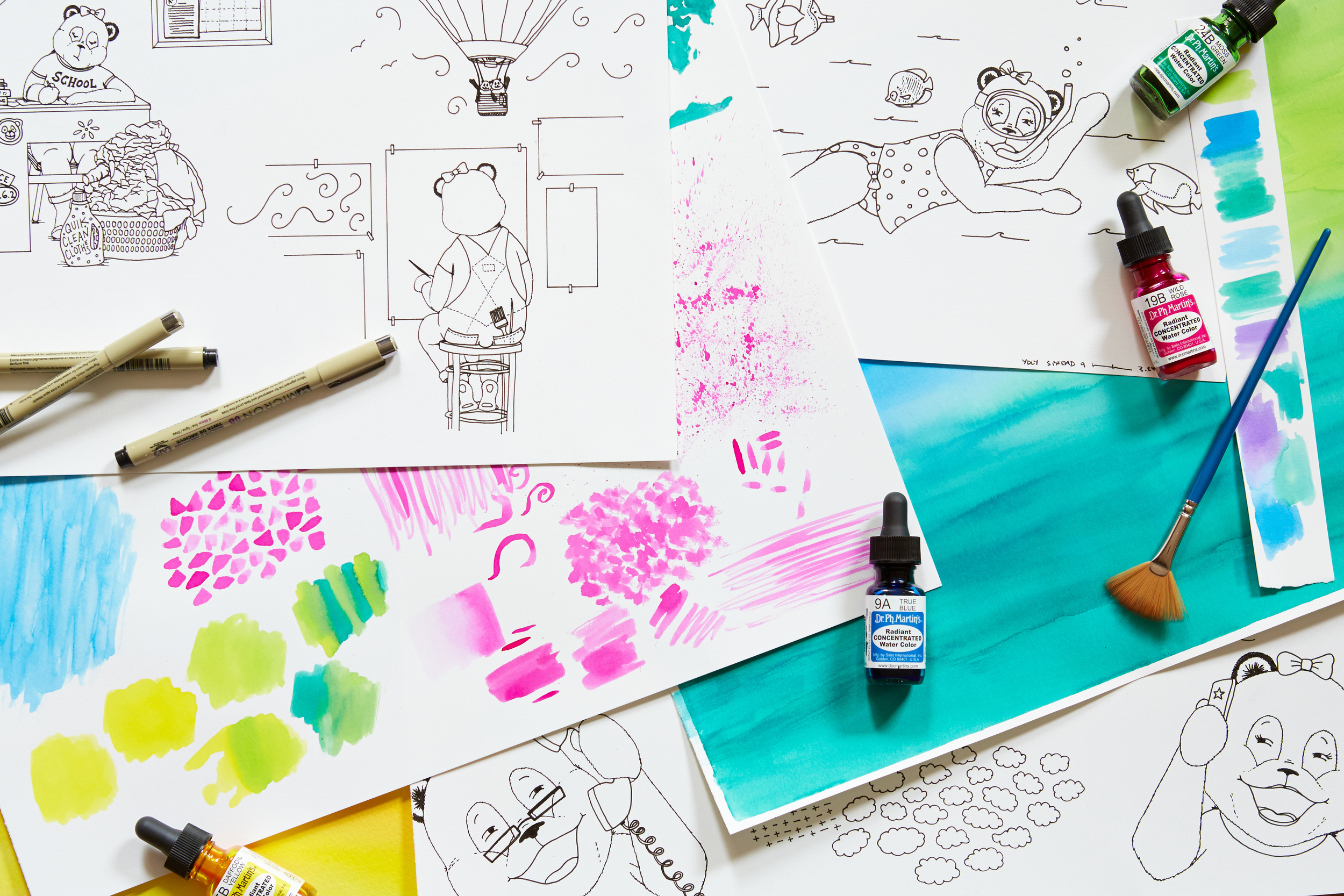
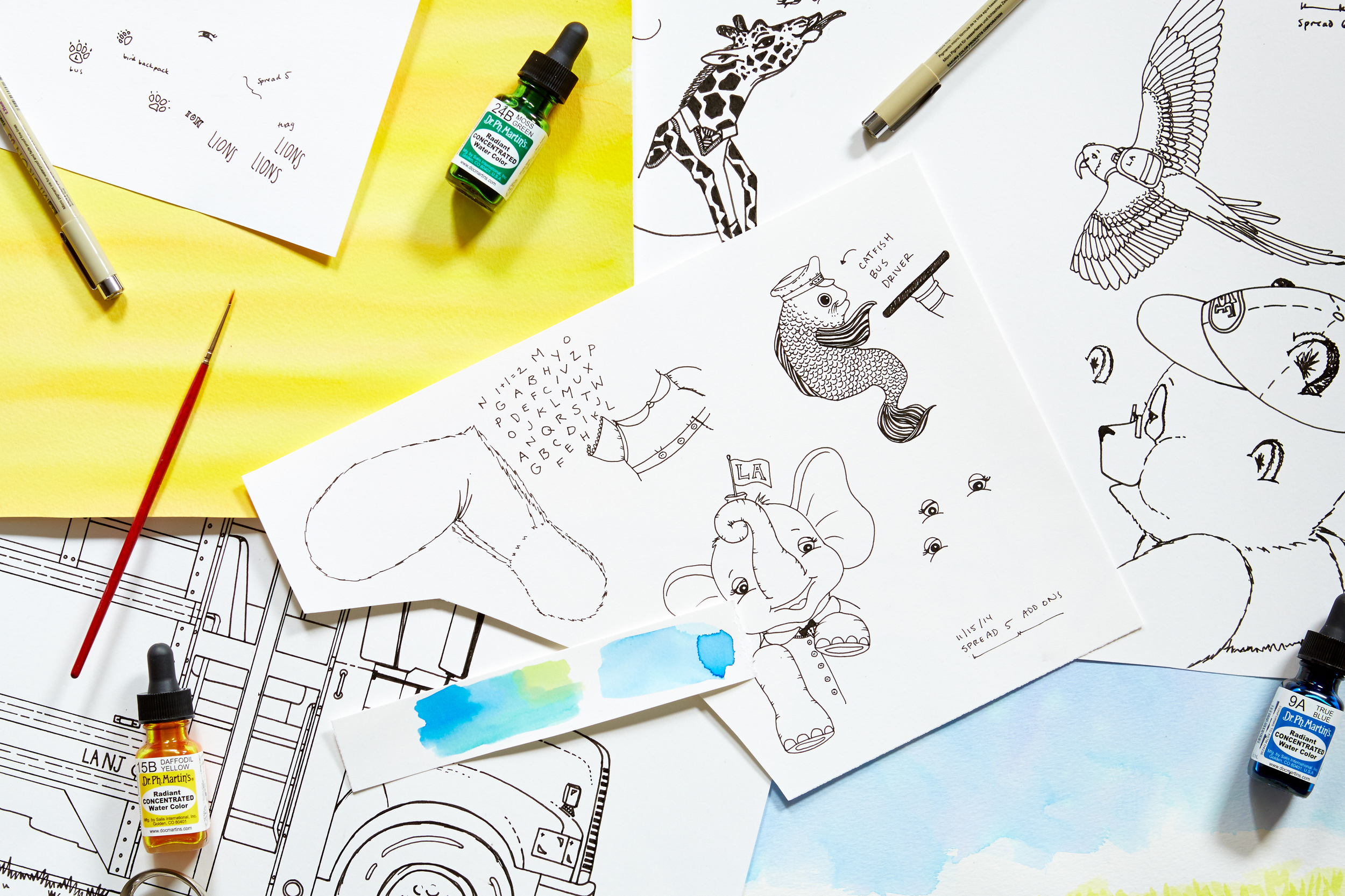
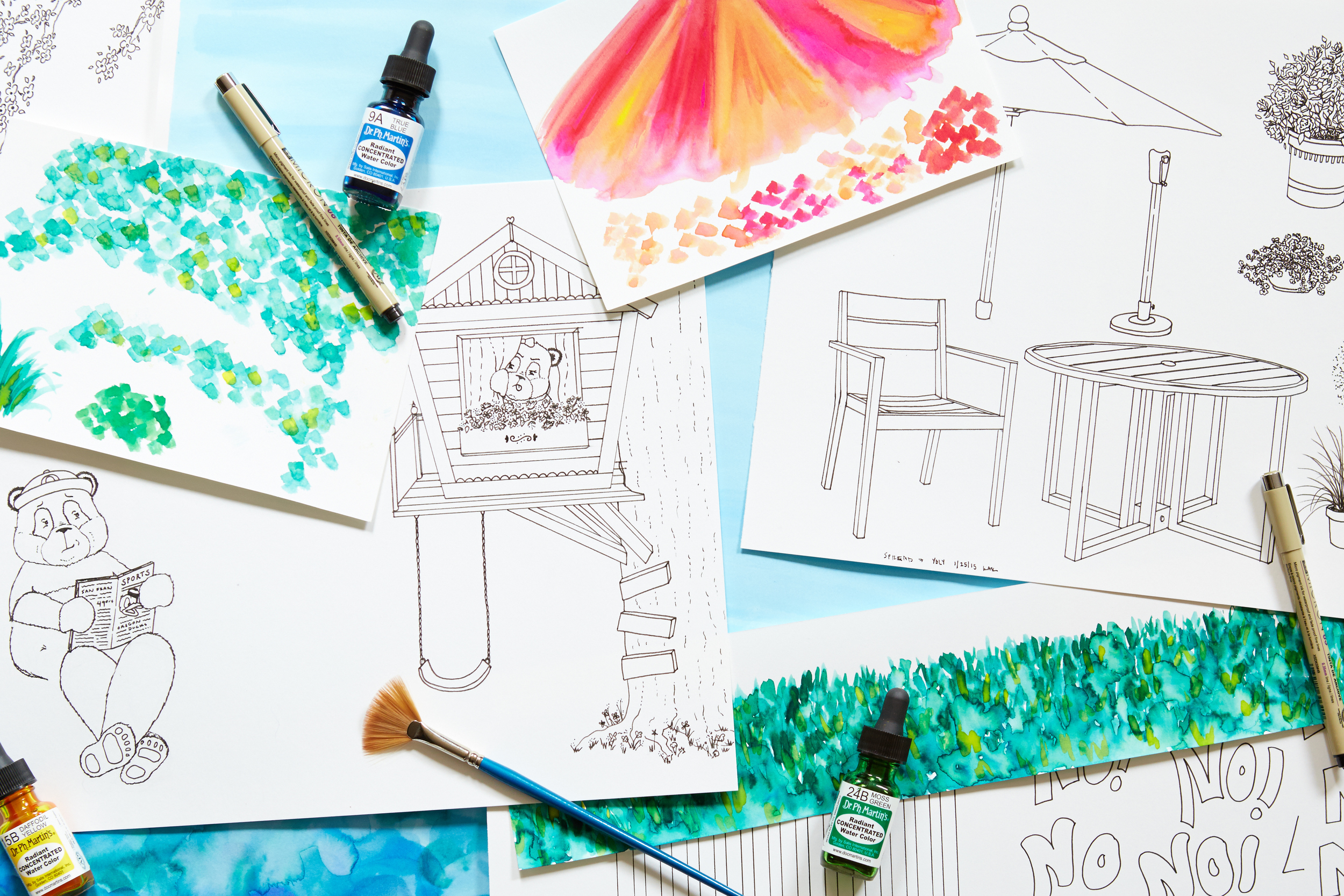
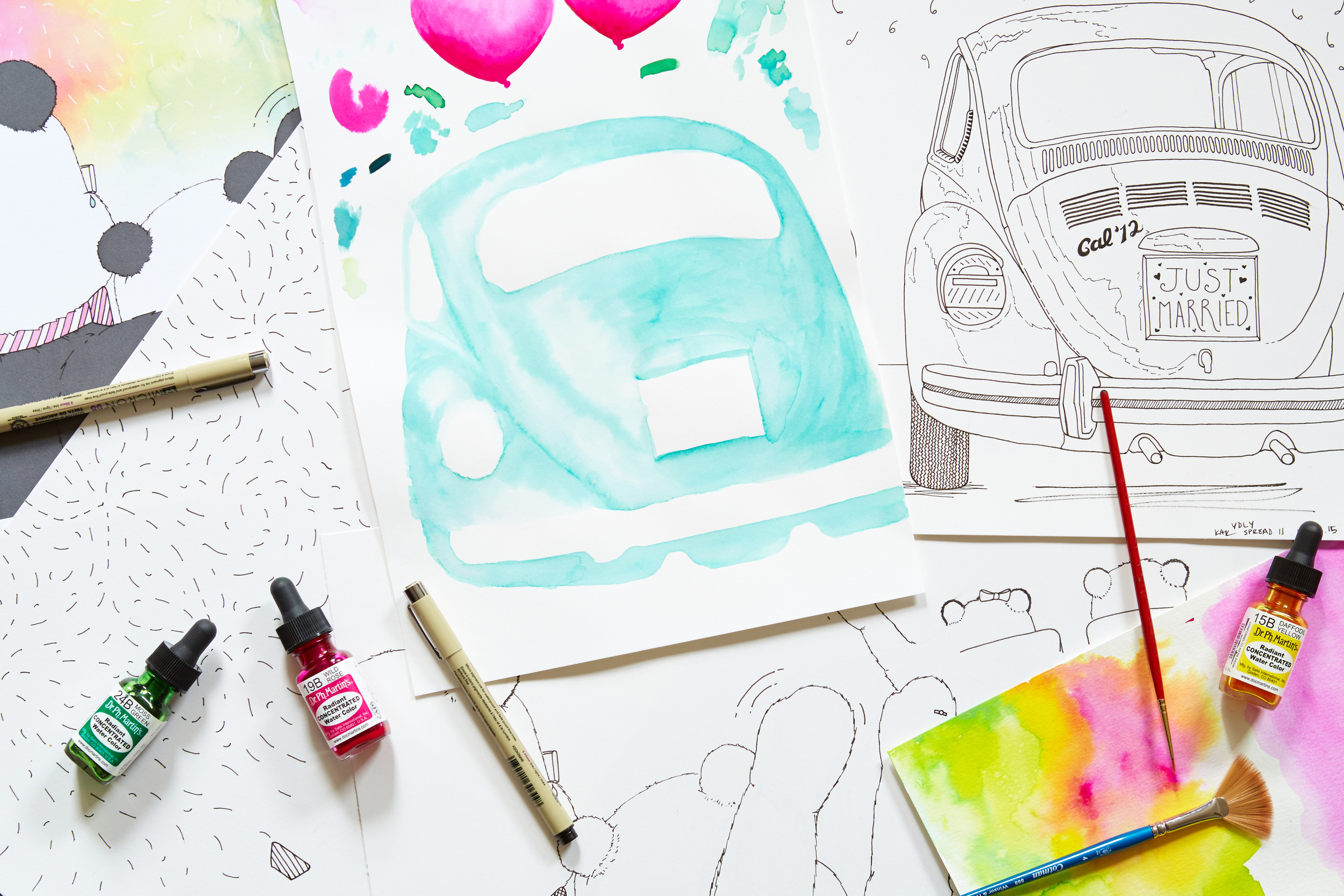
Pen, ink and watercolor
The style, the medium, and the content has all been decided, so what's left? The final art work! For the past 6 months, Katherine has been drawing, inking, painting and scanning the finished spreads.
Katherine works in multiple layers to piece together the entire piece. First she draws the outlines for the pandas and the details on the page, next she paints a watercolor background in bold colors with lots of texture and pattern.
She scans all of her artwork on to the computer - sometimes as many as 8 pieces of paper for one spread! - and uses Photoshop to layer the pieces on top of each other, and moves things around to get the best possible layout.
“You don’t always think about how many disparate pieces go in to putting together a children’s book, but it’s absolutely a group effort with many steps to get to one beautifully finished product!”

